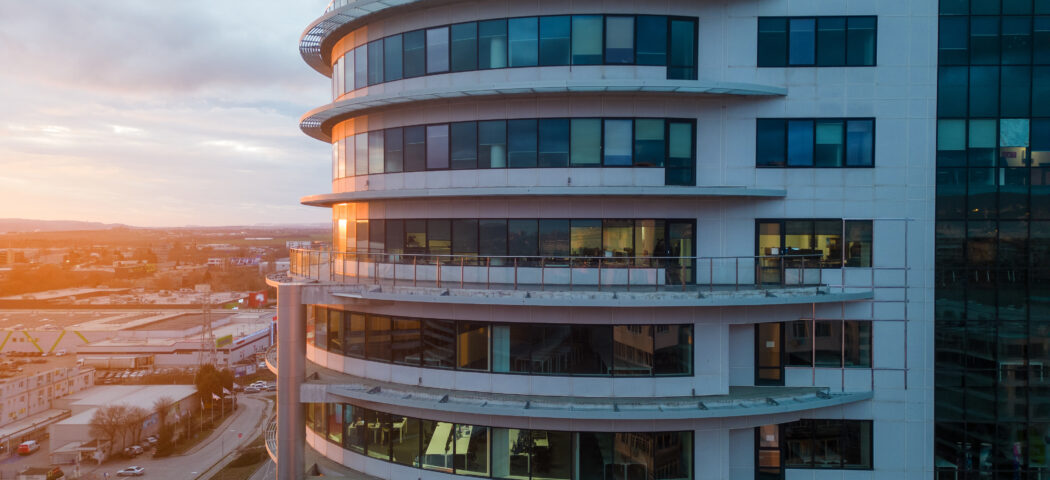Los Angeles, a bustling metropolis known for its iconic skyline, is home to numerous high-rise buildings that serve as commercial offices, luxury residences, and mixed-use developments. While these towering structures symbolize economic growth and modern living, they also present unique security challenges. Unauthorized access and security breaches can lead to theft, vandalism, workplace violence, and even acts of terrorism. Implementing a robust security strategy is crucial to safeguarding occupants, assets, and infrastructure.
In this article, we’ll explore best practices for high-rise building security, focusing on preventing unauthorized access and incidents, specifically in the Los Angeles area.
Understanding the Risks
High-rise buildings in Los Angeles face a variety of security threats, including:
- Unauthorized Entry: Tailgating, piggybacking, or inadequate security checkpoints can allow unauthorized individuals to gain access to restricted areas.
- Workplace Violence: Disgruntled employees, domestic disputes, or external threats can escalate into dangerous situations.
- Vandalism and Theft: High-value assets within commercial offices and residential buildings are attractive targets for criminals.
- Terrorism and Active Shooter Threats: High-profile buildings are potential targets for acts of violence or terrorism.
- Cybersecurity Threats: Digital access systems and surveillance networks are vulnerable to hacking and cyber-attacks.
Best Practices for High-Rise Building Security
- Implement Advanced Access Control Systems
Access control is the first line of defense against unauthorized entry.
- Key Card and Biometric Access: Using key cards, biometric scanners, or mobile-based access control systems ensures only authorized personnel can enter the premises.
- Visitor Management Systems: Require visitors to pre-register or check in at security desks with valid identification.
- Turnstiles and Security Gates: These can be integrated with access control systems to prevent unauthorized individuals from slipping in unnoticed.
- Enhance Surveillance and Monitoring
A high-tech surveillance system acts as both a deterrent and a means of recording suspicious activities.
- CCTV Surveillance: High-definition cameras should cover all entry points, parking lots, lobbies, stairwells, and elevators.
- Remote Monitoring: Security teams should have real-time access to footage from a centralized control room.
- AI-Powered Analytics: Advanced AI can detect unusual behavior, such as loitering or forced entry attempts, and alert security personnel immediately.
- Employ Professional Security Personnel
Security guards play a crucial role in ensuring safety.
- 24/7 On-Site Security Staff: Guards should be stationed at key entry points and patrol the premises regularly.
- Trained Armed and Unarmed Guards: Depending on the level of risk, both armed and unarmed security professionals can be deployed.
- Customer Service Approach: Well-trained security personnel should also serve as friendly greeters, creating a welcoming yet secure environment.
- Strengthen Perimeter Security
Securing the perimeter of a high-rise building prevents unauthorized individuals from attempting to breach the property.
- Fencing and Barriers: Physical barriers such as gates, bollards, and reinforced glass can deter unauthorized access.
- Secure Parking Areas: Parking lots and garages should have controlled access with vehicle recognition systems.
- Smart Lighting: Motion-sensor lights around the building enhance visibility and deter intruders.
- Implement Emergency Response and Crisis Management Plans
Preparedness is essential for mitigating incidents before they escalate.
- Emergency Evacuation Plans: Clear evacuation routes should be established and communicated to all occupants.
- Security Drills: Conduct regular active shooter drills, fire drills, and emergency response training.
- Coordination with Local Law Enforcement: Partnering with the LAPD and private security firms can enhance response times in case of emergencies.
- Cybersecurity Measures for Smart Buildings
Many high-rise buildings in Los Angeles use smart technologies for security, making cybersecurity an integral part of physical security.
- Encrypted Networks: Ensure all security cameras, access control systems, and digital communication networks are encrypted.
- Multi-Factor Authentication (MFA): Require MFA for access to building management systems.
- Regular Cybersecurity Audits: Conduct periodic assessments to identify and mitigate vulnerabilities.
- Tenant and Resident Awareness Programs
Security is a collective responsibility. Educating tenants and residents can significantly enhance overall building safety.
- Security Awareness Training: Conduct workshops on recognizing suspicious activity and reporting incidents.
- Anonymous Reporting Tools: Implement hotlines or mobile apps where residents and employees can report security concerns discreetly.
- Community Watch Programs: Encourage a sense of community where residents and tenants look out for one another.
Security Challenges in Los Angeles High-Rise Buildings
Los Angeles has its own set of challenges that require a tailored approach to high-rise security.
- High Foot Traffic Areas: Areas like Downtown LA, Hollywood, and Century City have a high volume of pedestrians and visitors, making access control more challenging.
- Homelessness Crisis: Unauthorized entry and squatting in vacant units or public spaces within buildings have become an increasing concern.
- Protests and Civil Unrest: Political and social movements can sometimes lead to protests near or within commercial buildings, necessitating additional security measures.
- Earthquake Preparedness: Unlike other cities, high-rise security in LA must integrate earthquake response measures to prevent chaos during seismic events.
Compliance with Local Security Regulations
Los Angeles has specific regulations governing building security, which must be adhered to:
- California Building Standards Code: Defines security measures for public and private high-rise buildings.
- Los Angeles Fire Code: Outlines fire safety and emergency evacuation procedures.
- OSHA Guidelines: Ensures workplace safety standards, including secure access control in office buildings.
- Private Security Act: Regulates the licensing and deployment of private security firms.
Ensuring high-rise building security in Los Angeles requires a multi-layered approach that combines advanced technology, skilled personnel, and proactive policies. From robust access control to emergency response planning, property managers and security professionals must continuously adapt to emerging threats and local challenges.
Investing in the right security measures not only prevents unauthorized access but also enhances the overall safety, reputation, and desirability of high-rise buildings in the city. By working together with law enforcement, tenants, and cutting-edge security firms, Los Angeles can set the standard for high-rise building security in urban environments.

